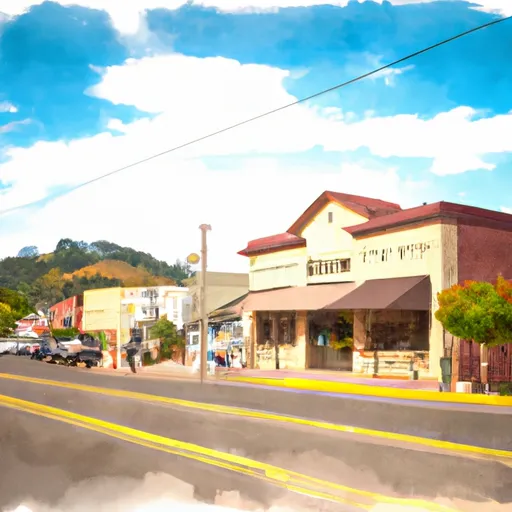-
 Snoflo Premium
Snoflo Premium
Get unlimited access to all our content
With no Ad interruptions! - Start Your Free Trial Login with existing account
Marshall
Eden Index
Climate
9.8
•
Recreation
6.0
•
Community
•
Safeguard
6.0/10

Marshall, California is a small coastal town located in Marin County, approximately 30 miles north of San Francisco. The town boasts a mild Mediterranean climate with cool, wet winters and warm, dry summers. Temperatures range from an average of 50°F in winter to 75°F in summer, making it an ideal destination for outdoor enthusiasts year-round.
Situated along the shores of Tomales Bay, Marshall offers a rich hydrology environment. The bay is known for its pristine waters, abundant marine life, and oyster farming. Visitors can enjoy activities such as kayaking, stand-up paddleboarding, fishing, and birdwatching. The Tomales Bay State Park provides opportunities for hiking along scenic trails, picnicking, and camping.
In addition to its aquatic offerings, Marshall is surrounded by picturesque landscapes, including rolling hills and lush forests. Outdoor enthusiasts can explore the nearby Point Reyes National Seashore, which offers a plethora of activities such as hiking, cycling, horseback riding, and camping. The park is renowned for its diverse ecosystem, including sandy beaches, coastal cliffs, and dense forests, making it a haven for nature lovers.
Overall, Marshall, California provides a fantastic climate, beautiful hydrology constituents, and an abundance of outdoor recreation opportunities, making it a must-visit destination for nature enthusiasts.
What is the Eden Index?
The Snoflo Eden Index serves as a comprehensive rating system for regions, evaluating their desirability through a holistic assessment of climate health, outdoor recreation opportunities, and natural disaster risk, acknowledging the profound impact of these factors on livability and well-being.
Climate Health Indicator (CHI): 9.8
Marshall receives approximately
976mm of rain per year,
with humidity levels near 77%
and air temperatures averaging around
14°C.
Marshall has a plant hardyness factor of
10, meaning
plants and agriculture in this region tend to thrive here all year round.
By considering the ideal temperature range, reliable water supplies, clean air, and stable seasonal rain or snowpacks, the Climate Health Indicator (CHI) underscores the significance of a healthy climate as the foundation for quality living.
A healthy climate is paramount for ensuring a high quality of life and livability in a region, fostering both physical well-being and environmental harmony. This can be characterized by ideal temperatures, reliable access to water supplies, clean air, and consistent seasonal rain or snowpacks.
Weather Forecast
Streamflow Conditions
San Francisco Bay
Area Rivers
San Francisco Bay
Snowpack Depths
San Francisco Bay
Reservoir Storage Capacity
San Francisco Bay
Groundwater Levels
Recreational Opportunity Index (ROI): 6.0
The Recreational Opportunity Index (ROI) recognizes the value of outdoor recreational options, such as parks, hiking trails, camping sites, and fishing spots, while acknowledging that climate plays a pivotal role in ensuring the comfort and consistency of these experiences.
Access to outdoor recreational opportunities, encompassing activities such as parks, hiking, camping, and fishing, is crucial for overall well-being, and the climate plays a pivotal role in enabling and enhancing these experiences, ensuring that individuals can engage in nature-based activities comfortably and consistently.
Camping Areas
| Campground | Campsites | Reservations | Toilets | Showers | Elevation |
|---|---|---|---|---|---|
| Sonoma County Fairgrounds RV Park | None | 173 ft |
Nearby Fishing
Catastrophe Safeguard Index (CSI):
The Catastrophe Safeguard Index (CSI) recognizes that natural disaster risk, encompassing floods, fires, hurricanes, and tornadoes, can drastically affect safety and the overall appeal of an area.
The level of natural disaster risk in a region significantly affects safety and the overall livability, with climate change amplifying these risks by potentially increasing the frequency and intensity of events like floods, fires, hurricanes, and tornadoes, thereby posing substantial challenges to community resilience and well-being.
Community Resilience Indicator (CRI):
The Community Resilience Indicator (CRI) recognizes that education, healthcare, and socioeconomics are crucial to the well-being of a region. The CRI acknowledges the profound impact of these elements on residents' overall quality of life. By evaluating educational resources, healthcare accessibility, and economic inclusivity, the index captures the essential aspects that contribute to a thriving community, fostering resident satisfaction, equity, and social cohesion.

